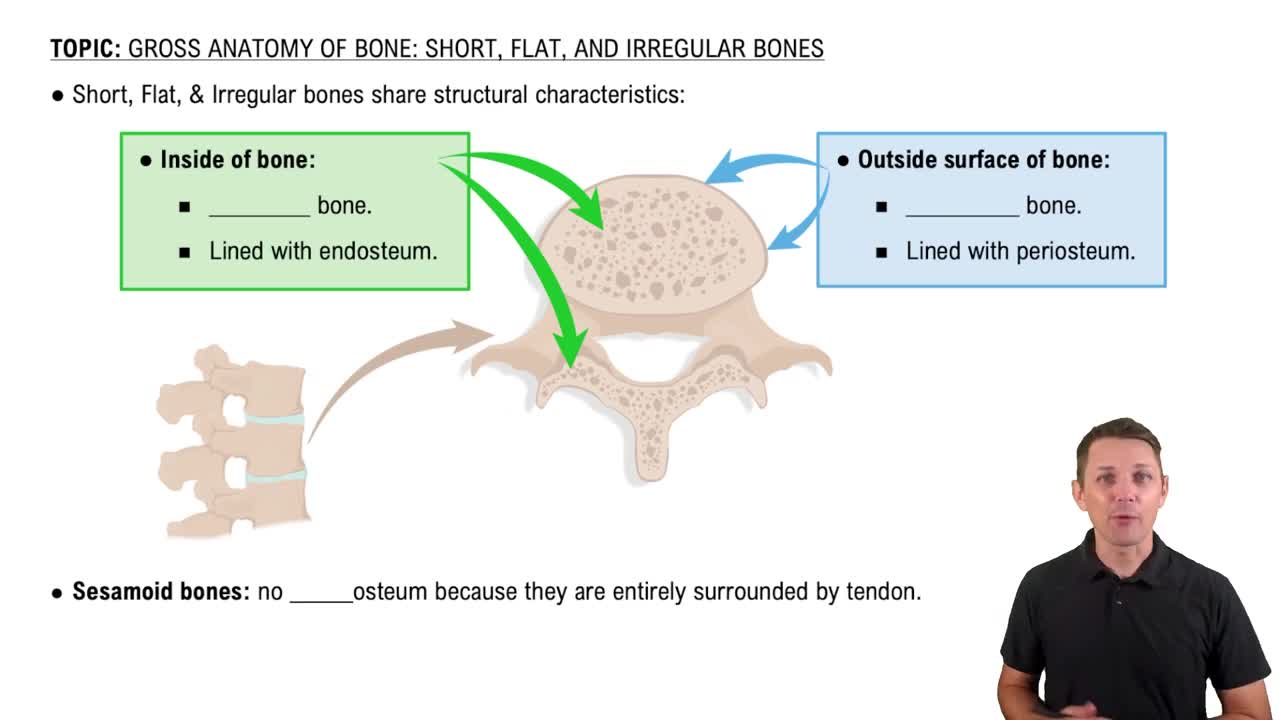Bone Classification
Bones can be classified into four main shapes: long, short, flat, and irregular. Long bones, like the femur, are longer than they are wide and primarily function in movement. Short bones, such as the carpals, are roughly cube-shaped and provide stability. Flat bones, like the skull, offer protection and surface area for muscle attachment, while irregular bones, such as the vertebrae, have complex shapes that fulfill various functions.
Recommended video:
Structural Joint Classifications
Long Bones
Long bones are characterized by their elongated shape and are primarily found in the limbs. They consist of a diaphysis (shaft) and epiphyses (ends), which are crucial for movement and support. Examples include the humerus and tibia. These bones contain bone marrow, which is essential for blood cell production, and are vital for the body's overall structure and function.
Recommended video:
Flat Bones
Flat bones are thin and often curved, providing protection to internal organs and serving as attachment points for muscles. They are typically composed of two layers of compact bone surrounding a layer of spongy bone. Examples include the ribs, sternum, and cranial bones. Their structure allows them to absorb impact and protect vital organs, making them essential in the skeletal system.
Recommended video:
Short, Flat, and Irregular Bones
 Verified Solution
Verified Solution



 2:58m
2:58m
